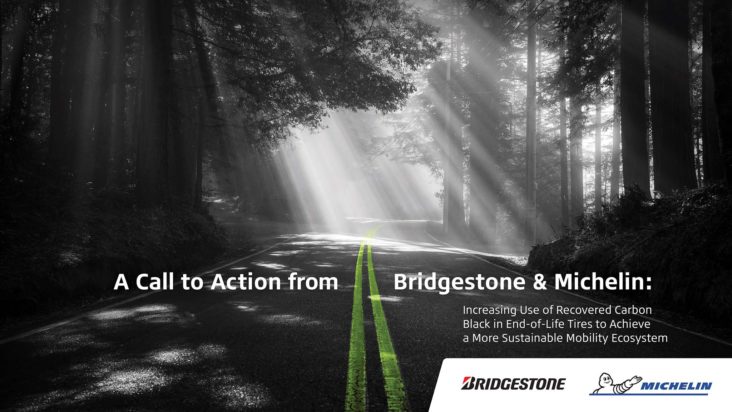Bridgestone And Michelin To Jointly Discuss Recovered Carbon Black’s Role In Building A More Sustainable Mobility Ecosystem

Bridgestone Corporation and Michelin Group will deliver a shared perspective regarding material circularity and the ambition to increase the utilization of recovered carbon black material in tires. The joint presentation will take place at the Smithers Recovered Carbon Black Conference in Amsterdam on November 22, 2021.
An estimated one billion tires around the world reach the end of their useful service life every year. Many of the technical challenges surrounding the use of recycled and recovered materials from end-of-life tires are understood, but barriers remain towards achieving material circularity at the scale necessary to realize a more sustainable mobility ecosystem. Today, less than one percent of all carbon black material used globally in new tire production comes from recycled end-of-life tires due to a weak supply pipeline for the recovery and reuse of carbon black.
Recovered carbon black presents the opportunity to reduce the tire industry’s reliance on petrochemicals by replacing a portion of traditional carbon black with a sustainable and circular alterative without introducing performance tradeoffs. Additionally, using recovered carbon black in new tire production reduces CO2 emissions by up to 85% compared to virgin materials.
At the conference, the two companies will outline a path aimed at promoting and increasing the utilization of recovered carbon black in new tires and other rubber products. Collaboration with stakeholders across all aspects of the tire and rubber industry value chain will be needed to deliver this goal. As such, Michelin and Bridgestone seek to establish a coalition of a diverse group of stakeholders, including tire manufacturers, carbon black suppliers, pyrolysis partners and emerging technology startups to accelerate progress and increase supply of recovered carbon black.
“Increasing use of recovered carbon black in tires is critical to achieving Bridgestone’s vision for sustainable mobility,” said JakeRønsholt, vice president of strategy and transformation, Bridgestone Europe, Middle East, India and Africa. “Together with Michelin and other stakeholders, we can generate critical momentum on this important initiative and advance our efforts to reduce CO2 emissions and manufacture products from fully renewable and sustainable materials.”
“For years discussions have been ongoing about the different constraints and hurdles that were preventing the rubber industry to adopt recycled and or recovered raw materials in significant quantities,” said Sander Vermeulen, vice president, end-of-life rubber products recycling business, Michelin. “We felt it was the time to stop discussing and actively contribute to finding solutions that would enable the rubber industry as a whole to become more circular by increasing its ability to adopt recycled and or recovered materials from end-of-life tires. I am delighted that we found a partner in Bridgestone that shares our vision, and together we invite stakeholders across the tire and rubber value chain to participate in the journey toward material circularity.”
As part of the joint initiative, Bridgestone and Michelin will lead the development of a position paper that will outline the tire industry’s role in achieving a circular economy. Later in 2022, the companies will release a white paper to outline the technical requirements, characteristics and proposed solutions to increase the utilization of recovered carbon black in new tires.



